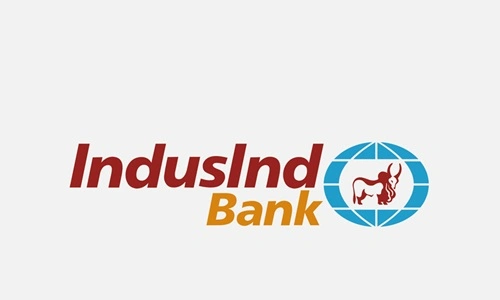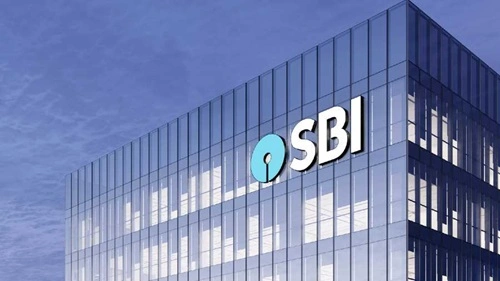IDFC FIRST Bank, born from the merger of IDFC Bank and Capital First, has come a long way. Its hybrid DNA combines infrastructure finance heritage with a sharp retail-lending focus. As it heads into 2026, the bank is balancing strong deposit growth and digital momentum with ongoing challenges in its microfinance portfolio and rising provisioning requirements. A detailed SWOT analysis reveals how IDFC FIRST Bank can play to its strengths, fix its vulnerabilities, leverage future opportunities, and guard against external risks.
IDFC FIRST Bank Overview:

- FY 2025 PAT: ₹1,525 crore, though down ~48% YoY due to microfinance stress.
- Deposits (March 2025): ₹2,42,543 crore, up 25.2% YoY.
- Retail Deposits share: ~79% of total customer deposits.
- CASA Deposits (March 2025): ₹1,18,237 crore, CASA ratio at 46.9%. Loans & Advances (March 2025): ₹2,41,926 crore, up 20.4% YoY.
- Retail / Rural / MSME book: ₹1,97,568 crore, growing steadily.
- Microfinance exposure: Sharply pared down — reduced by 28.3% YoY; share in total book fell from 6.6% to 4.0% (as of March 2025).
- Q1 FY26 performance: PAT dropped 32% YoY to ₹463 crore; NII rose by 5.1%. Q2 FY26 performance: Profit surged 76% YoY to ₹352 crore; CASA crossed 50% (50.07%) for the first time.
- Capital Raise: Bank has approved a ₹7,500 crore raise via convertible preference shares from Warburg Pincus and ADIA affiliates.
Strengths
1. Robust Deposit Growth & High CASA Ratio
IDFC FIRST Bank’s customer deposits grew by 25.2% in FY25, with retail deposits rising even faster. Its CASA ratio has remained strong — 46.9% in FY25, and improved to ~50.07% in Q2 FY26. This low-cost funding base gives the bank significant flexibility on lending and margin management.
2. Lean Retail-First Asset Mix
The bank has successfully pivoted its lending book: retail, rural, and MSME segments now account for a large share, reducing its reliance on riskier or bulk borrowings. Its microfinance exposure, once a high-growth but volatile segment, has been sharply cut, improving risk profile.
3. Strong Operating Efficiency
Despite credit headwinds, IDFC FIRST has maintained a solid core operating performance. In FY25, core operating profit (excluding trading gains) rose 17% YoY. The bank’s ability to scale operating income while managing costs is a critical competency.
4. Strategic Capital Infusion
The planned ₹7,500 crore infusion from Warburg Pincus and ADIA’s affiliate via convertible preference shares will significantly bolster capital adequacy, support future credit growth, and deepen the bank’s strategic partnerships.
5. Innovative Retail Products & Digital Reach
The bank has a growing credit card base (over 3.5 million cards issued) and has scaled its wealth-management AUM, while being a major Fastag issuer (17.8 million live tags). This mix adds to its non-interest income and retail stickiness.
Weaknesses
1. Profit Volatility
The sharp drop in PAT in FY25 (from FY24) and a further 32% YoY dip in Q1 FY26 highlight the volatility that microfinance stress brings. High provisions (₹5,515 crore in FY25) have weighed on earnings.
2. Asset-Quality Risks in Microfinance
While the microfinance portfolio has been reduced, delinquency and slippages in that business continue to pose a risk.The previous concentration in this segment has left some legacy risk.
3. Margin Pressure
In Q2 FY26, NIM declined by 59 basis points YoY, indicating pressure on lending spreads. The bank itself has acknowledged that part of this comes from passing on rate benefits to eligible borrowers and slower repricing of term deposits.t
4. Rising Provisioning Burden
Elevated provisions due to slippages are a recurring headwind. In Q1 FY26, provisions jumped 67% YoY. Sustaining such high coverage could be a drag on profitability if credit stress continues.
5. Dependency on Capital Raise Execution
While the capital raise is a big plus, the successful execution (regulatory and shareholder approvals) is not guaranteed. Delays or dilution concerns could affect strategy or investor sentiment.
Opportunities
1. Accelerated Retail & MSME Lending
With strong low-cost deposits and growing retail infrastructure, IDFC FIRST can further scale its mortgage, SME, and consumer lending. This would diversify risk and reduce dependency on microfinance.
2. Digital Banking & Product Innovation
The bank’s traction in credit cards, Fastag, and wealth management can be further leveraged with digital onboarding, analytics-driven cross-sell, and partnerships with fintechs to deepen reach and reduce cost-to-serve.
3. Asset Quality Stabilization & Rebalancing
By further shrinking the microfinance portfolio and increasing focus on secured or lower-risk retail lending, IDFC FIRST can de-risk its balance sheet and reduce future provisioning needs.
4. Strong Capital Base to Fuel Growth
The fresh capital from Warburg and ADIA can be used for aggressive branch expansion, technology investment, and loan book growth — particularly in underpenetrated or high-potential segments.
5. Fee-Income Expansion
Leveraging its customer base to cross-sell payments, wealth, cards, and advisory services can help grow non-interest income, making earnings more resilient across rate cycles.
Threats
1. Macroeconomic Slowdown
A broad economic downturn, especially impacting SMEs or consumer demand, could drive higher slippages and necessitate more provisioning.
2. Competition from Larger Private Banks
Big private-sector banks and fintech lenders may aggressively compete for retail and MSME customers, pressurizing deposit costs, interest spreads, and wallet share.
3. Regulatory Risk
Tighter regulations on provisioning, microfinance operations, or capital requirements could increase costs for the bank. Any stricter norms could hamper growth or profitability.
4. Funding Risk
If deposit growth slows or repricing of term liabilities becomes costlier, the bank could face funding pressure, especially given its recent growth trajectory.
5. Execution Risk on Strategy
Scaling retail products, running digital transformations, or managing progressive provisioning are operationally challenging. Poor execution could undermine growth or damage investor and customer confidence.
Conclusion
IDFC FIRST Bank stands at a crossroads in 2026. On one hand, it has built a powerful and scalable retail-deposit business, a rising CASA base, and strategic capital backing. On the other, it continues to grapple with microfinance stress, margin pressure, and provisioning volatility. The next few years will be about discipline — reducing risk in its loan book, executing its digital and retail strategy, and scaling without over-levering. If it navigates these challenges well, IDFC FIRST has the ingredients to become a strong, modern mid-tier bank with both stable deposit funding and diversified earnings. But failure on either risk management or capital execution could blunt its growth ambition.

